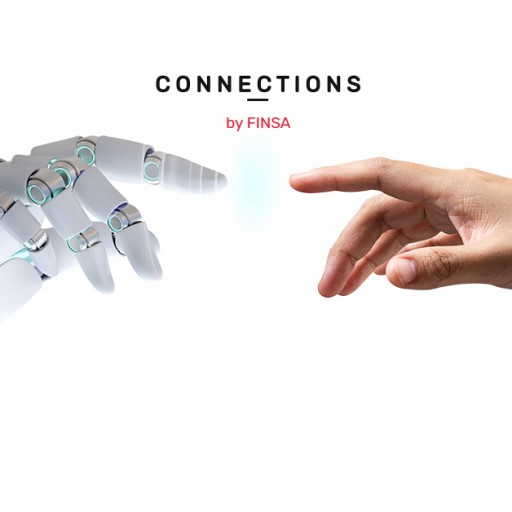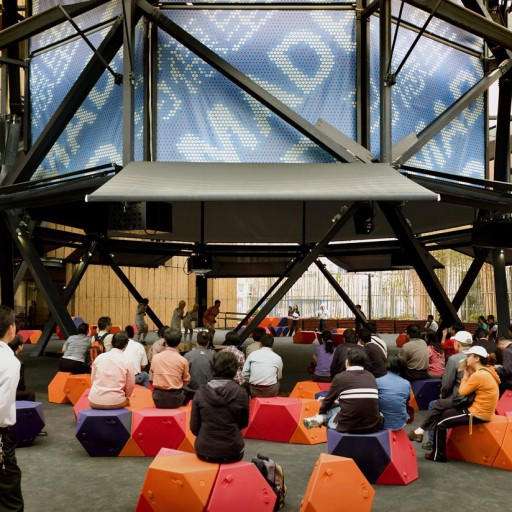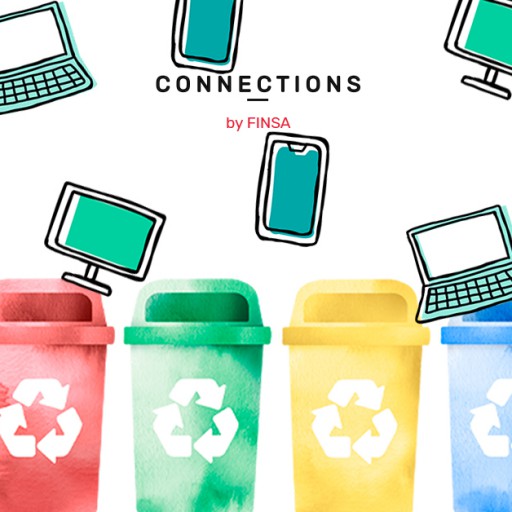The Asociación de Diseñadores de la Comunitat Valenciana (ADCV)v has taken its strategy further over the last few years, focusing on research, analysis, and promoting the use of design in businesses and the effect that it has on society and things like innovation and productivity. On April 27, 2022, AKA International Design Day, the ADCV launched OID! which stands for Observatorio del Impacto del Diseño (Observatory for the Impact of Design), an initiative backed by the Agencia Valencia de la Innovación (AVI) that acts as space of reference designed to foster design-based innovation with a global and transversal focus. It is open to the public, design professionals, and companies working in the sector.
According to its creators, it’s a “qualitative leap” in the impact that design has on all fronts: economic, social, cultural, and environmental. In fact, the observatory’s main purpose is bringing the Valencian business community together and improving sustainability in the region as well as the wellbeing of its people.
In order to achieve this, OID! will focus on four main areas:
- observing and tracking the evolution of design’s impact on society
- pinpointing and proposing different spheres that will benefit from design
- acting as a bridge between design and institutions, business, researchers, the academic world, and society
- creating tools that make it easier to manage design and that make knowledge tangible
In this way, the new platform brings together many others. Here are a few that have already been set in motion or that are being developed:
Ver esta publicación en Instagram
D-Tool Box
This self-testing toolbox, which is actually 3 apps in 1, was created to help organisations use and manage design. It is practical and easily accessed online (www.economiadisseny.com/d-tool) and it’s free. It has been designed to help companies understand how design can make them more competitive and improve their position in the marketplace.
With a simple online questionnaire, D-Tool invites management to do some necessary reflection about how they use design and then suggests a starting point that could result in increased productivity and improved sustainability for the company.
It’s also a resource for design studios, as it may prove useful for them during the first meeting with a client, helping them to better understand the client’s objectives, vision, and current situation when it comes to how they perceive, and how they are using, design.
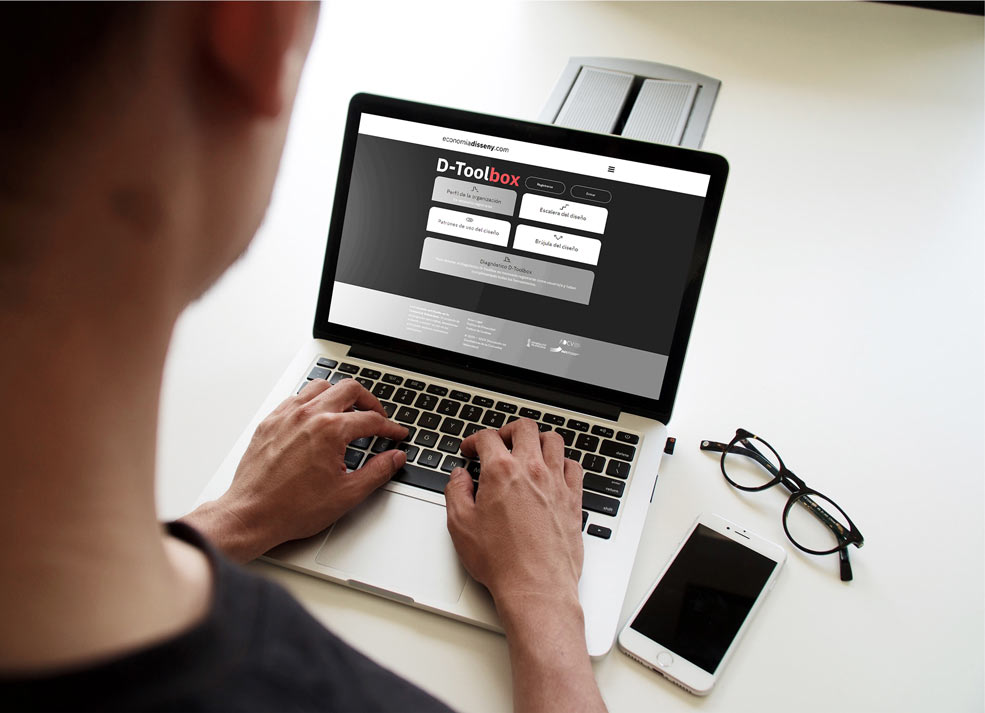
How does D-Tool Box work? Well, it consists of three parts.
- A subjective questionnaire with a series of questions about the relationship that the company has with design and how it uses it.
- An objective questionnaire that describes the company using its size, turnover, and the field in which it operates.
- A diagnosis with a report, based on the answers to the previous questions, which acts as a starting point for continuing the work.
Dividing D-Toolbox into three separate tools makes it faster to use. Each one can be used independently and at different times. They each provide a direct and immediate result and, when examined alongside the company’s profile, offer a final diagnosis complete with suggestions about how design can be used to solve problems or meet the needs that the organisation has expressed.
Alicía García manages the project and highlights another feature: the apps can be used without prior registration, which she says “means that D-ToolBox can be used for experimentation and tests, something that was not previously possible.
The toolbox will be filled with other tools over time thanks to continued updates.
EnCircular
When the circular economy, sustainability, and design come together, the result is improved productivity and competitiveness within the business community. EnCircular began in November 2020 as a meeting place for all those involved in the evolution of more sustainable social and economic models. According to a study on the platform, this line of action is explicitly laid out in the strategy of 67.8% of businesses in Valencia, with this percentage reaching 84.7% in companies with more than 100 employees.
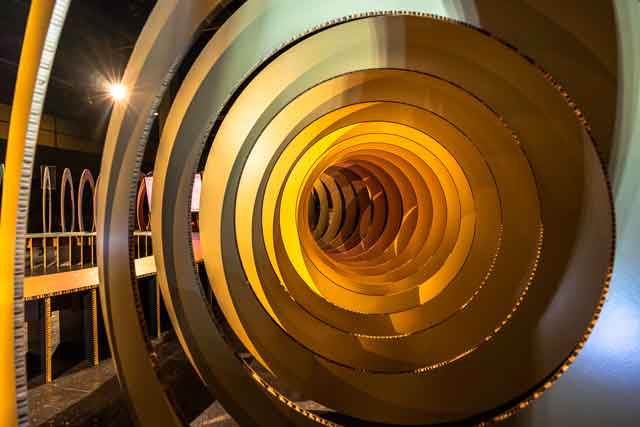
It’s a well-rounded online resource that:
- provides access to information and knowledge regarding trends, regulations, projects, programs, and success stories in the circular economy
- offers resources and tools to facilitate practical application of circular economy strategies
- allows businesses to locate and contact public and private agencies working in their fields using a interactive digital map
- gives a level of visibility to organisations, companies, and institutions that are working on specific and innovative projects related to the circular economy
This inclusive approach based on collaboration has meant that, within the space of a few months, EnCircular has become a point of reference in the circular economy world on both a national and international level. One of the services it already offers is an open form to all organisations that want to share their initiatives, good practices, and disruptive projects so that others can use them as a point of reference or inspiration in their own organisations or research projects. New functionalities will also be available soon.
Escala de Orientación del Diseño (Design Guidance Ladder)
This is designed to complement the tools in the D-Tool Box and will be launched at the end of the year. This self-diagnostic tool, developed by Mónica Cantó, a researcher and professor at the Escola de Disseny de València, will quantitively and objectively measure how much design has been integrated into a company, providing key data to define strategies and action plans. However, unlike other scales, such as the Design Ladder by Danish Design Centre, it provides measurable and comparable data, which means the company can see its competitive advantages and areas in which it needs to improve. With this in mind, they can make strategic decisions.
Contratardiseño.es Guide
The Contratardiseño.es guide (which translates to ‘hiredesign.es’) was launched last year, but it is one of the standout design projects in Valencia. It’s the result of a collaboration between ADCV and World Design Capital Valencia 2022.
Contratardiseño, a guide to the management and hiring of design, is a free online platform (http://www.contratardiseño.es) and a pioneering initiative in Spain. Its mission is to act a reference tool for every organisation, company, institution, and public service that needs assistance and guidance when it comes to the proper management and hiring of design services. It also wants to become a source of support for professionals and studios working in the sector when it comes to their relationship with clients. At the launch, director of WDCV2022 Xavi Calvo explained that “we know that including good design in our lives makes them better. Including good design in any project, and doing so in the right way, makes it grow”.
What does this guide include? Well, a lot of interesting and useful content:
- Basic information about what design actually is and what it can offer.
- Dynamics (how to hire and how much it costs).
- Types of design services that can be hired.
- Different types of hiring.
- Current legislation on the subject.
- Downloadable material, such as different briefing models.
- Articles written by well-known professionals in the sector, including Xènia Viladàs, Nacho Lavernia, and Manuel Lecuona.
- A section dedicated to the processes involved in hiring in the public sector.
- Studies and analyses that demonstrate design’s contribution to innovation, competitiveness, and the globalisation of organisations.
- Links of interest.
- Real company success stories.
One of these examples is Teika, a company that provides personalised services for ATMs and vending machines:
Ver esta publicación en Instagram
There’s also LZF Lamps, a lighting company that combines design and craftsmanship with research and technology in their handmade wood veneer lamps:
Ver esta publicación en Instagram
The online platform, which was developed by Copymouse, a design co-op that’s been operating for over 10 years, also has a section for reporting and alerting others to speculative practices in the sector, including a manifesto that is open to other organisations and professionals.
Smart health: a course in co-design in healthcare
The ADCV and Las Naves, the centre for social and urban innovation in Valencia city, have launched this course, another pioneering program in Spain, whose goal is to train designers to work in the healthcare sector. In recent months. the pandemic and its many subsequent waves have seen processes of innovation and transformation be accelerated in public healthcare systems, meaning there are big opportunities for improvement. But, in order to find the best solutions, the systems have needed the help of professionals and users of these services.
This initiative arose from this context and is still in development. The course will be led by Raquel Pelta, a professor at the University of Barcelona and an expert in applied co-design in the social sphere, and will combine technical training and case studies presented by experts with a practical workshop in collaboration with Enfermeras por el Cambio (‘Nurses for Change), during which innovative solutions to common problems and specific needs will be found.
It’s a completely new concept in Spain, but it has already been done in other countries. In fact, the course is inspired by similar initiatives that took place some years ago and that had a lot of success in countries like Great Britain, the Netherlands, New Zealand, Australia, and many Scandinavian countries. These programs focused on participation and improving healthcare services using co-creation processes that saw users and professionals being guided by expert designers. According to ADCV’s director, María Navarro, “the concept is innovative and very necessary because, even though demand is increasing, there are very few professionals with experience in co-design methodology and there is also a need for practical training with a focus on the healthcare sector. This course could inspire other initiatives related to social innovation”.


